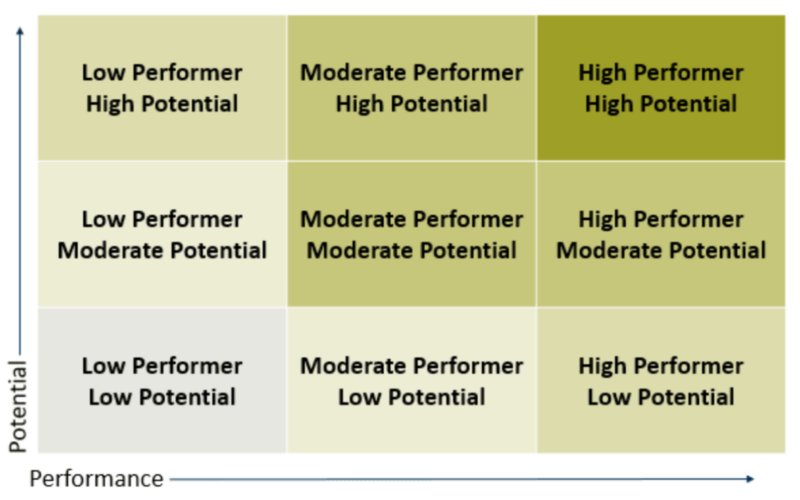Implementing a 9-box assessment can be tricky if you or your managers have never used one before. Check out some practical steps and strategies for successfully implementing a 9-box assessment within your organization, from talent evaluation to alignment with your strategic goals.
Define Clear Criteria
When implementing a 9-box assessment, define criteria that can be applied uniformly. These criteria should include measurable and objective performance measures such as job knowledge, productivity, and attendance. Additionally, the criteria should be tailored to the specific job in question and should be updated regularly as job roles evolve.
Lead a calibration process to make sure that everyone is aligned on your definitions of “performance” and “potential” across high, moderate, and low levels. Calibration should involve HR and managers assessing employees along the 9 grid. In large organizations, calibration typically requires several meetings across leadership levels to arrive at the best, most widely applicable definitions.
Choose the Right Assessors
Select assessors who have an unbiased view of the employees being assessed as well as the required knowledge and experience to accurately evaluate their performance. Generally, the employee’s manager is the best person to complete the 9-box assessment.
Make sure all assessors understand and know how to apply the criteria developed during calibration as they carry out the assessment.
Gain Consent to Collect Employee Data
Gaining consent for collecting employee data is an important component of employee communication around the 9 box model. When assessing performance and potential, managers refer to employee data to rank employees appropriately. Some data they use includes productivity metrics, feedback from managers and peers, and project outcomes as well as leadership qualities, skills, adaptability, and willingness to learn.
To gain consent to collect employee data when implementing a 9-box assessment, obtain written or verbal agreement from employees to ensure they understand how their data is being used. Generally, the data used during a 9 box is collected during other processes, such as performance management and learning and development. Your employee handbook likely contains information regarding the type of data you collect during these processes that employees have already reviewed and agreed to.
Conduct 9-Box Assessments
Help managers collect performance and potential data for each employee, which may include performance appraisals, feedback, project results, leadership qualities, and career aspirations. From there, managers can use this data to assess each employee’s performance and potential on a nine-point scale and map them to the nine boxes of the 9-box assessment program.
Review and Adjust
Hold calibration sessions following completion of the 9-box assessment to discuss and validate the placement of employees on the grid. This collaborative effort helps ensure objectivity and consensus in the assessment process.
Over time, conduct scheduled reviews of the 9-box grid, typically on a quarterly or annual basis, to assess any changes in employee performance and potential. Compare the current grid with previous versions to identify shifts or trends.
Facilitate Feedback Sessions Between Managers and Employees
Conducting feedback sessions following a 9-box assessment involves scheduling one-on-one meetings between managers and employees to discuss their placement on the grid, performance, and potential. During these sessions, provide clear, constructive feedback; listen to their perspectives; and collaboratively develop action plans for career growth and development aligned with their assessed performance and potential.
Craft Development Plans
With the results of the 9-box assessment in hand, help managers work with team members to develop targeted growth plans. Review the 9-box assessment to identify employees with high potential and performance or those needing improvement. Understand each person’s specific strengths and areas for growth.
Work with each employee to set clear, achievable development goals based on their placement on the grid. Goals should be specific, measurable, and aligned with their career aspirations and the organization’s needs. Design development initiatives and training programs that cater to each employee’s unique needs and goals. This might include mentoring, on-the-job training, workshops, or leadership programs.
Integrate the 9-Box Assessment With Other HR Processes
Integrating a 9 box assessment with other HR processes involves aligning talent management strategies. Incorporate the 9 box results into performance reviews, succession planning, and individual employee development plans, ensuring a cohesive approach to talent development and organizational growth.
Additionally, sharing 9-box insights with recruitment and onboarding processes helps in identifying external talent with the desired potential and performance levels for strategic roles within the organization.
